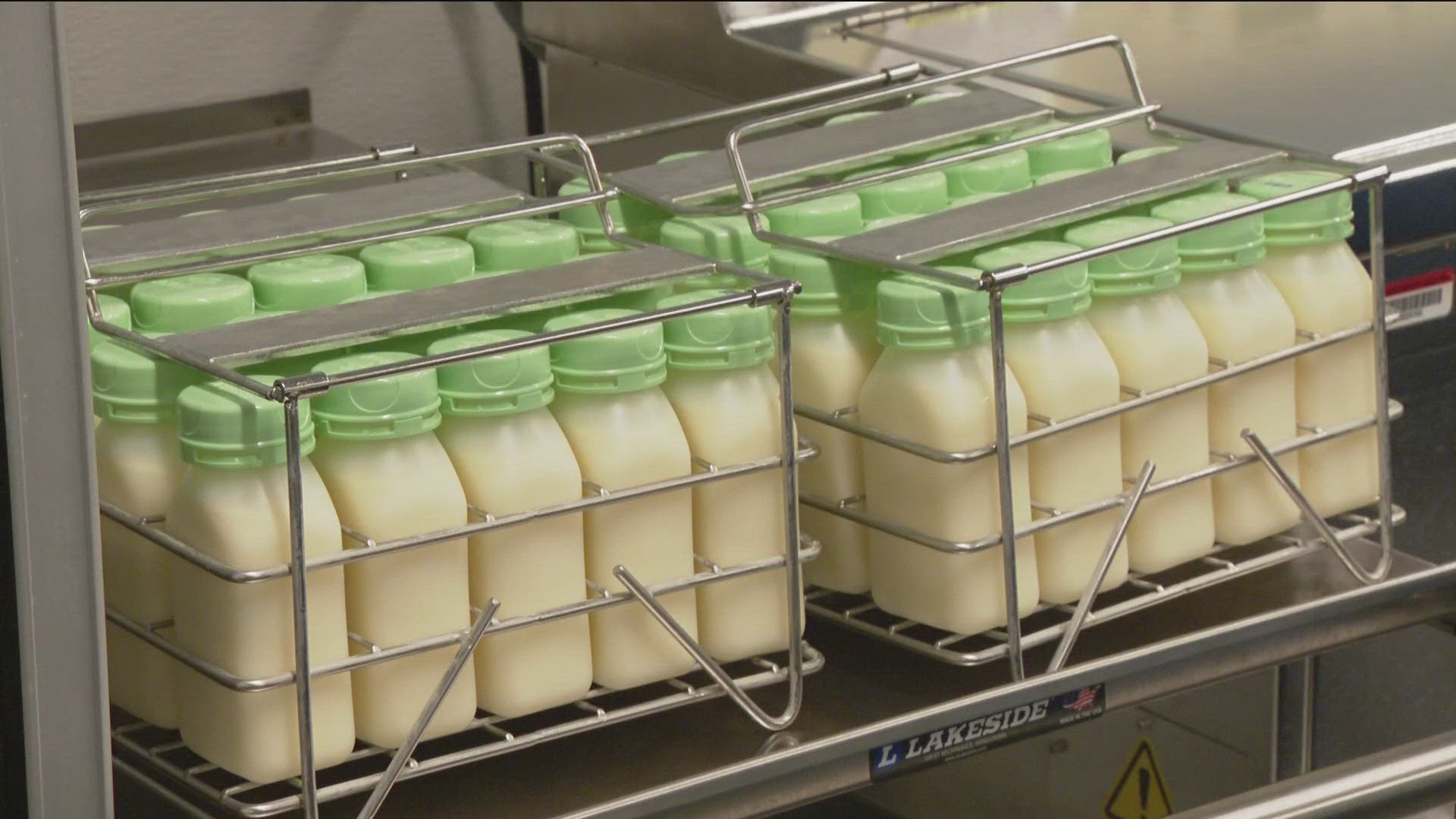SAN DIEGO — The University of California Health Milk Bank, operated out of the San Diego Blood Bank campus in southeast San Diego, is closing in on its goal of becoming the standard of milk banks across the country.
Although around for more than a century, milk banks are not always top-of-mind for new parents, but can be lifesaving.
"I feel like breast milk is just really magical, it’s really special," Andy Arnold, a donor, said. "It’s something that can’t be reproduced."
After having her third child, Arnold realized she was overproducing breastmilk and running out of uses and storage space for it. After asking friends and coworkers (Arnold works in nutrition, focused on feeding babies in hospitals), she learned of the UC Health Milk Bank.
"I had no idea something like this existed," she said. "Once I found out about it, I knew I was meant to help other babies and just kind of provide a sense of support to other moms."
She filled out the application on the milk bank's website, and soon got a call for an interview, eventually speaking with Doctor Lisa Stellwagen's team.
"Just like with blood donation, people who donate milk to a nonprofit milk bank are not paid for their gift," Dr. Stellwagen explained, as CBS 8 toured the milk banks laboratory. "They donate out of the goodness of their heart; they often have gotten the message about the importance of milk."
Dr. Stellwagen conceived the idea for the milk bank while working in the newborn medical unit at UC San Diego Health, where she and her team discovered something.
"We started reducing the rate of necrotizing enterocolitis, which is a bowel catastrophe that can happen to the tiniest babies, especially if they’re not receiving their mother’s own milk," she said.
Stellwagen fleshed out the idea, but it stayed on her work desk until a gift from a philanthropic family funded the project. The milk bank opened in 2020.
"Our goal is to really make the best milk so the NICUs (neonatal intensive care units) trust it, so they’ll use it consistently to feed babies and improve their outcomes," Stellwagen said.
That goal starts with a stringent vetting process:
People wanting to donate begin by filling out an application on the milk bank's website. A quick interview with a donor coordinator from the bank is next. Once that step is done, the bank will reach out to the donor's primary care doctor, to check for any issues, diseases, or complications which could make the donation process difficult or dangerous for the donor or render the milk unusable. A blood test is part of the process. Once the results of all these steps come back and are approved, the donor can start pumping, freezing, and donating the milk.
The Human Milk Banking Association of North America sets the standards and protocols of donating. Dr. Stellwagen sits on the board of directors, and says the goal is "...safety and quality, but we also want to improve donations and use the milk as we should and minimize waste."
At the lab, donations come frozen and are kept in a freezer until techs are ready to inspect it. When the time comes, they take the pouches and pour them into a pot-- all donations from one person kept together at this point, no mixing yet. From that pot, the techs will take a sample to run a pre-culture, checking for any viruses or bacteria which could survive pasteurization. like bacillus cereus. Any contaminated milk won't be used.
Once the culture results come back clear, the techs will then begin to mix batches from different donors, to maximize the nutritional content.
"If I take milk from one mother and feed it to a NICU baby and that milk is low in calories, the baby’s not going to grow," Stellwagen explained. "But what we noticed is if we pull milk from 5-8 donors together into a large 50 liter pool, we’re going to mostly hit our target of 20 calories per ounce."
Once combined, techs bottle, seal, and pasteurize the milk in the lab. They take another sample for one last culture and put the milk in storage. Once that second culture comes back clear, the milk is greenlit for use in NICUs. Batches that are not up to perfect nutrition standards for pre-mature babies in NICUs in dire situations are not wasted, and instead are sold.
"There are families that buy a lot of milk from us and they tend to be families who are having a baby via adoption, via surrogacy, a mother who had mastectomies for breast cancer, and they’re very eager to get their child optimal nutrition," Stellwagen said. However, she added the majority of milk goes to hospitals. "It’s expensive and it’s not for everybody..."
But it can be lifesaving for those who it can benefit, and a feel-good moment for donors who can help, like Arnold.
"I can’t imagine having a baby in the NICU and all that stress and overwhelming feeling that comes with that, so knowing that I can help made me really proud," she said.
Just as proud as Dr. Stellwagen is of her team and the donors who make it happen.
"I’m forever thankful for the families that take the time and the effort...," she said. "But you know, that’s what people do for each other."

